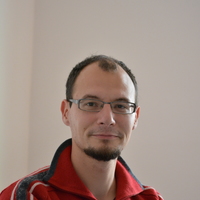- Funerary Archaeology, Early Medieval Archaeology, Archaeology of ethnicity, Archaeology of the Avars, Archaeology Of The Migration Period And The Early Middle Ages, Age of migrations, and 25 moreGepidic period, Merovingian period, Gepids, Avars, Gepids, Early Byzantine Archaeology, Death and Burial (Archaeology), Brooches, Migrations (Archaeology), 1st Millennium AD (Archaeology), Burial Practices (Archaeology), Deviant burial (Archaeology), Burial Customs, Byzantine Archaeology, Early Slavs, Slavic Archaeology, Great Migration period, Avar Age, Late Antique Archaeology, Migration Period Archaeology, Avars, Hun Age, The World of the Huns: Studies in Their History and Culture, Late Antique and Byzantine Jewellery, Early Byzantine material culture, and Langobardsedit
The Transylvanian Basin is one of the less intensive researched regions of the Carpathian Basin from the Avar period. Given the fact that it is surrounded by the mountain range of the Carpathians, it constitutes a separate and quite... more
The Transylvanian Basin is one of the less intensive researched regions of the
Carpathian Basin from the Avar period. Given the fact that it is surrounded by
the mountain range of the Carpathians, it constitutes a separate and quite
well delimited geographical unit. Of course, this situation had a serious impact
on the historical evolution of the region. During the Avar period Transylvania
can be considered a peripheral region of the Avar Khaganate, which, for this
reason, shows a rather different archaeological picture in comparison with the
core areas of the Carpathian Basin. First of all, both in the early and the late
phase of the Avar period a heterogeneity of the archaeological evidence can be
observed. This situation has generally been explained on ethnic grounds, mainly
with the coexistence of different communities living side by side (e.g. Avars,
Gepids, Slavs, etc.).
The paper is an attempt to sketch the settlement pattern of the Transylvanian
Basin during the Avar period based on the archaeological evidence coming
from funerary remains. The issue of the local elites as well as the communication
networks with the rest of the khaganate is also raised. Emphasis is put on
the importance of the micro-regional differences within the Transylvanian Basin.
Unfortunately, the archaeological data are scanty (and sometimes of poor
quality) and therefore only partial and incomplete results can be expected.
Carpathian Basin from the Avar period. Given the fact that it is surrounded by
the mountain range of the Carpathians, it constitutes a separate and quite
well delimited geographical unit. Of course, this situation had a serious impact
on the historical evolution of the region. During the Avar period Transylvania
can be considered a peripheral region of the Avar Khaganate, which, for this
reason, shows a rather different archaeological picture in comparison with the
core areas of the Carpathian Basin. First of all, both in the early and the late
phase of the Avar period a heterogeneity of the archaeological evidence can be
observed. This situation has generally been explained on ethnic grounds, mainly
with the coexistence of different communities living side by side (e.g. Avars,
Gepids, Slavs, etc.).
The paper is an attempt to sketch the settlement pattern of the Transylvanian
Basin during the Avar period based on the archaeological evidence coming
from funerary remains. The issue of the local elites as well as the communication
networks with the rest of the khaganate is also raised. Emphasis is put on
the importance of the micro-regional differences within the Transylvanian Basin.
Unfortunately, the archaeological data are scanty (and sometimes of poor
quality) and therefore only partial and incomplete results can be expected.
Research Interests:
In 2015 rescue excavations were carried out in the vicinity of Sângeorgiu de Mureș which identified a settlement dated between the second half of the 3rd century and the beginning of the 4th century AD. In the northeastern area of the... more
In 2015 rescue excavations were carried out in the vicinity of Sângeorgiu de Mureș which identified a settlement dated between the second half of the 3rd century and the beginning of the 4th century AD. In the northeastern area of the excavated surface two graves dated to the 5th century were discovered, one of them being dug in the fill of a dwelling. Both burials were disturbed. According to the anthropological analysis in Grave 1 a 25–35-year old man with Mongoloid traits and artificially deformed skull was buried, while Grave 2 belonged to an adult. Grave 1 also included a partial horse burial. Based on the grave-goods discovered in Grave 1 (Grave 2 did not include any grave-goods) strong Hun-period traditions can be detected; however, the latest objects suggest a dating in the second half of the 5th century.
Research Interests:
Migration, despite the fact it is a key concept of archaeological research, has been theorised only during the last three decades, yet the impact of the recent theoretical development is almost invisible in Eastern-European archaeology.... more
Migration, despite the fact it is a key concept of archaeological research, has been theorised only during the last three decades, yet the impact of the recent theoretical development is almost invisible in Eastern-European archaeology. This study is an attempt to offer a short survey of how migration and image of the so-called migratory peoples evolved in the archaeology dealing with Transylvania during the Migrations Period and the Early Middle Ages with a brief outlook on the theoretical and methodological debates of the international research.
Research Interests:
Research Interests:
Summary of PhD thesis.
